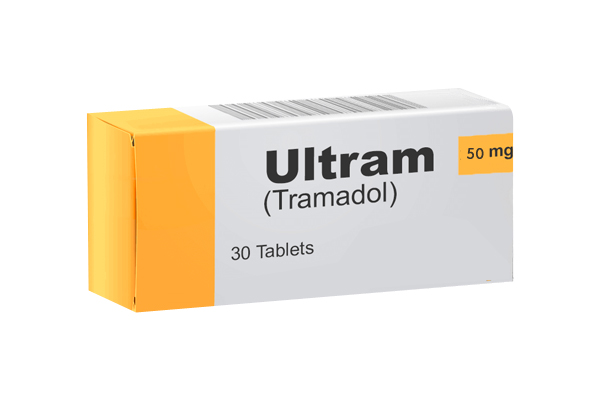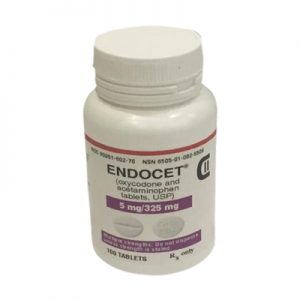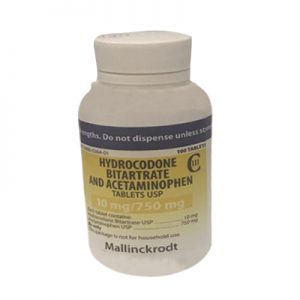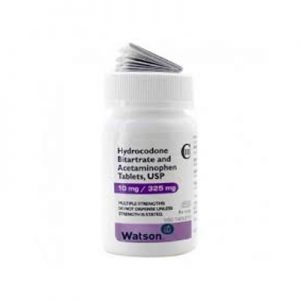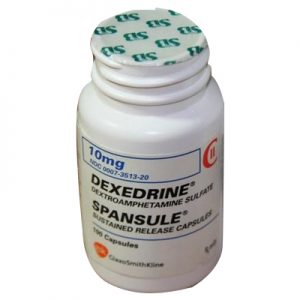Description
PURCHASE ULTRAM TRAMADOL 50 MG HCI TABLETS USA ONLINE.
Ultram Tramadol 50 mg is the generic name for a prescription pain reliever sold under the brand names Ultram, Conzip, Rybix ODT, and Ultram ER.
Doctors prescribe tramadol to treat moderate to severe pain in adults.
Ultram Tramadol 50 mg comes as a tablet, and as an extended-release tablet or capsule to treat around-the-clock pain.
It’s in a class of pain drugs called opiate narcotic analgesics, which work by changing the way your brain responds to pain. It may increase levels of the neurotransmitters norepinephrine and serotonin.
Ultracet is a combination drug, made from tramadol and acetaminophen.
The Food and Drug Administration (FDA) approved tramadol in 1995 for the drug company Janssen Pharmaceuticals under the brand name Ultram.
In 2002, the FDA approved a generic version of tramadol, which many companies now manufacture.
A 2014 study suggested that giving tramadol to people before surgery may help ease post-anesthesia shivering – a common complication that develops in people recovering from general anesthesia.
TRAMADOL ‘HIGH’ AND ABUSE
Although tramadol is widely considered safe and has FDA approval, there have been many reports of abuse, because the drug can have opioid-like effects, giving users a narcotic “high.”
In 2010, Janssen and the FDA issued a revised warning for tramadol tablets, advising doctors not to prescribe the drug for people who are suicidal, at risk for addiction, take tranquilizers or antidepressants, have alcohol or drug abuse problems, or are depressed or emotionally disturbed.
In 2011, tramadol was linked to 20,000 emergency department visits around the country, according to a report in MedPage Today.
In Florida alone, there were 379 overdose deaths involving tramadol in 2011, a significant jump from 106 deaths recorded in 2003.
As a result of these and many other incidents, the Drug Enforcement Administration (DEA) classified tramadol as a controlled substance in 2014, subjecting the drug to stricter controls.
ULTRAM TRAMADOL 50 MG WARNINGS
Tramadol may increase your risk for having a seizure.
This can occur at a normal dose but is more likely if you take more tramadol than prescribed.
You may be at greater risk if you are taking an antidepressant or another opioid pain reliever. You may also be at risk if you have a history of seizures, drug or alcohol abuse, or depression.
People who are suicidal or prone to addiction should not take tramadol. Those with a history of emotional disturbances (including depression or alcohol abuse) should consider taking non-narcotic analgesics instead.
Because tramadol increases the amount of serotonin in your brain, you may be at risk for a condition called serotonin syndromeif you combine tramadol with other medications that also raise serotonin levels, especially antidepressants.
Symptoms of serotonin syndrome include agitation, fever, nausea, muscle stiffness, lack of coordination, and/or loss of consciousness.
Tramadol may be habit-forming. Taking tramadol for a long time and in high doses may cause you to become tolerant of the drug and dependent.
This means that if you stop taking tramadol suddenly, you could have withdrawal symptoms, including sweating, nausea, muscle aches, insomnia, tremors, and anxiety.
Tramadol may cause decrease your ability to breathe, a condition called respiratory depression. Life-threatening respiratory depression can occur if you take too much tramadol.
You may be at greater risk for respiratory depression if you use other opioid pain medications, street drugs, alcohol, or tranquilizers, or if you have a history of head trauma or increased pressure in your brain.
You may not be able to take tramadol if you have severe asthma or any lung conditions that causes breathing problems.
Before starting tramadol, also tell your doctor if you have, or have had, any of the following:
- Head injury or stroke
- Seizures
- Liver disease, such as cirrhosis, or liver damage from past disease
- Digestive disease or digestive problems like constipation
- Kidney disease or related problems
- Any mental health conditions, such as depression, bipolar disorder, or others
- Thoughts of suicide
- Brain infection or brain tumor
- History of drug or alcohol abuse
PREGNANCY AND ULTRAM TRAMADOL 50 MG
Tramadol may cause harm to a developing fetus.
If you’re a woman, let your doctor know if you are or may be pregnant. If you become pregnant while taking tramadol, tell your doctor right away.
In addition to the risk of harming a developing fetus, tramadol can cause dangerous withdrawal symptoms in newborns.
Tramadol also passes into breast milk, so don’t breastfeed while taking tramadol.
Anyone younger than 16 should not take tramadol.
TRAMADOL FOR DOGS AND CATS
Tramadol is often used to treat pain in dogs and cats, especially post-surgery pain and chronic pain.
Because many non-steroidal anti-inflammatory drugs (NSAIDs) aren’t safe for use in cats, tramadol is a widely used alternative pain medication for cats.
In dogs and cats, tramadol may cause constipation, upset stomach, or decreased heart rate. An overdose of tramadol may cause seizures and constricted pupils.

